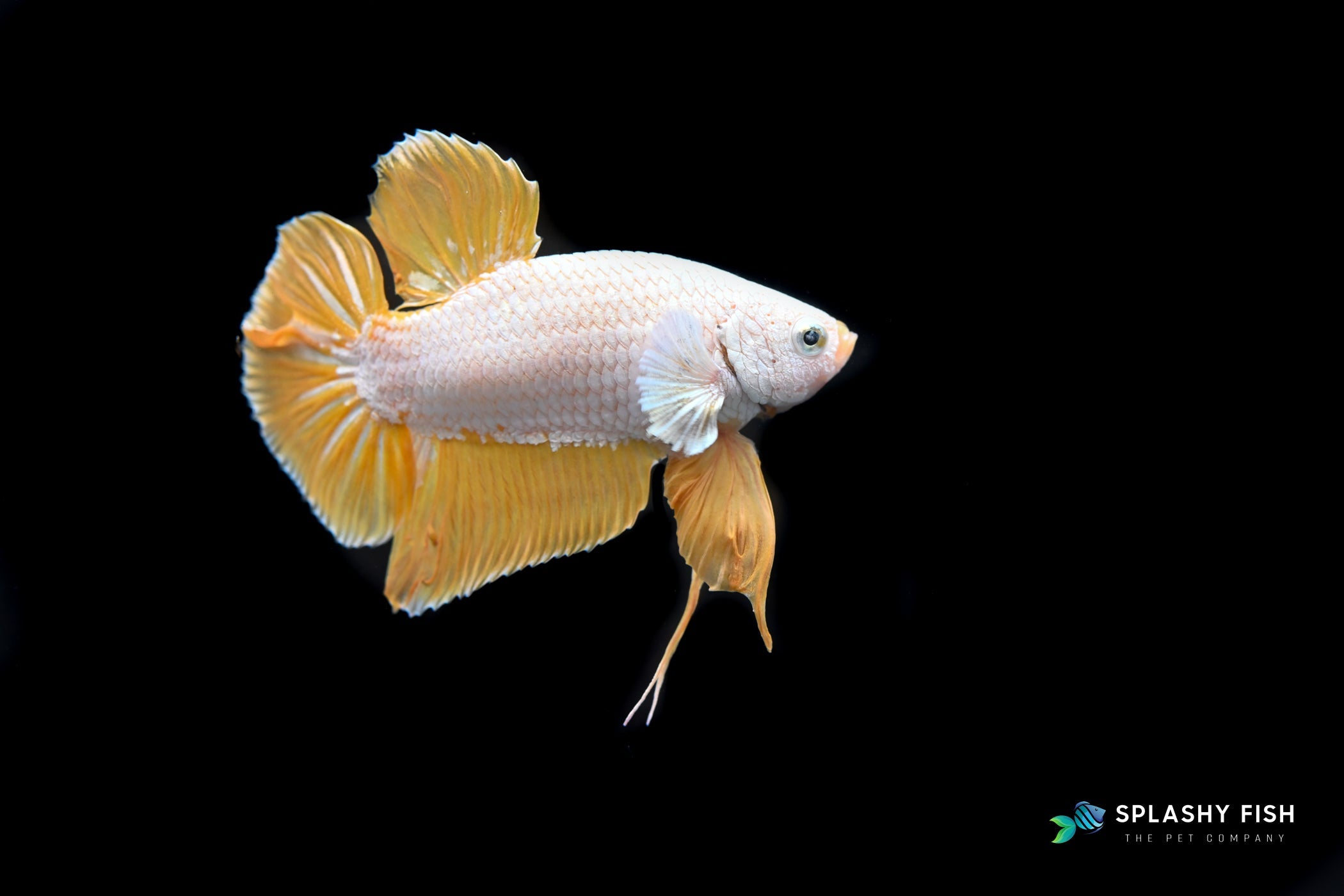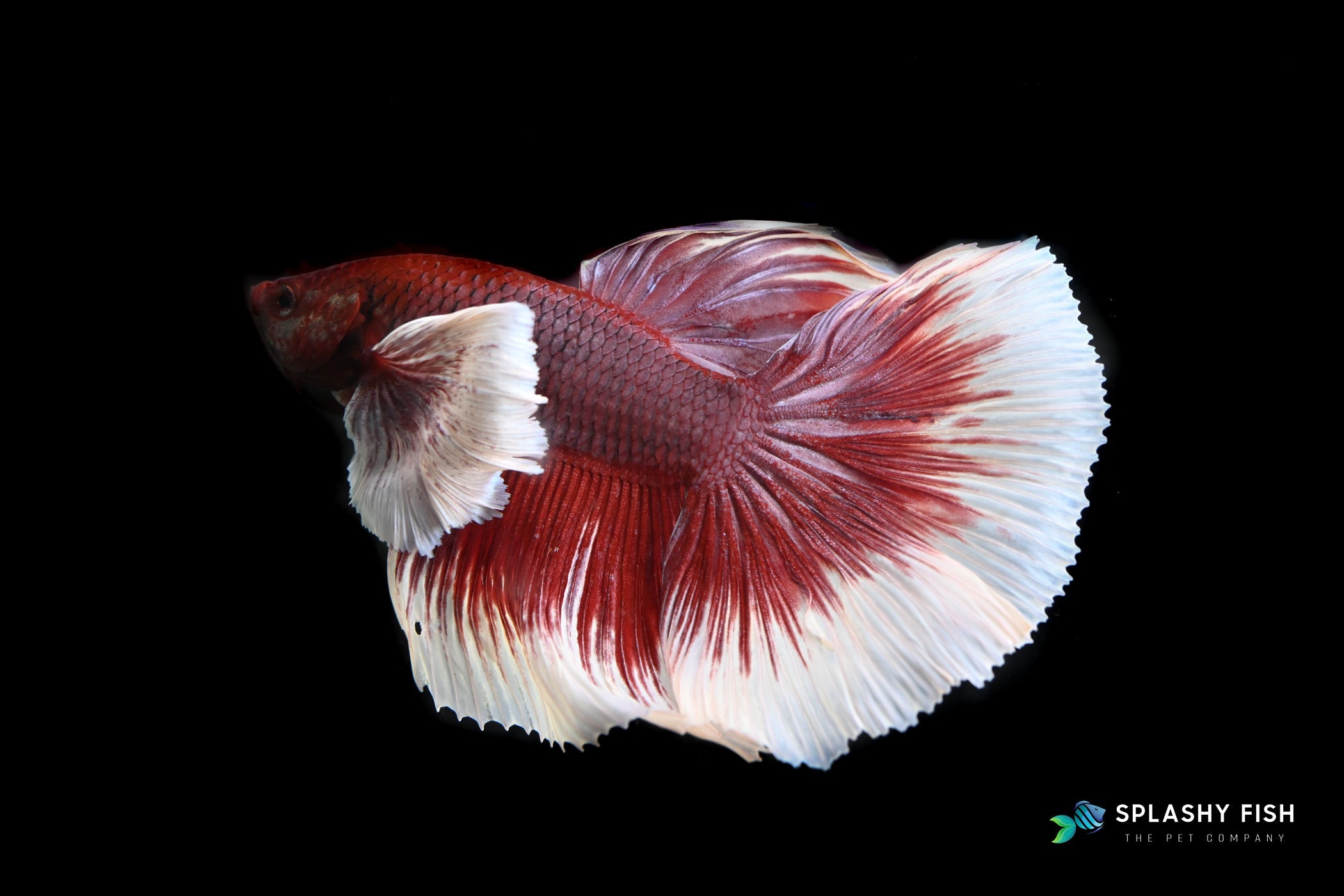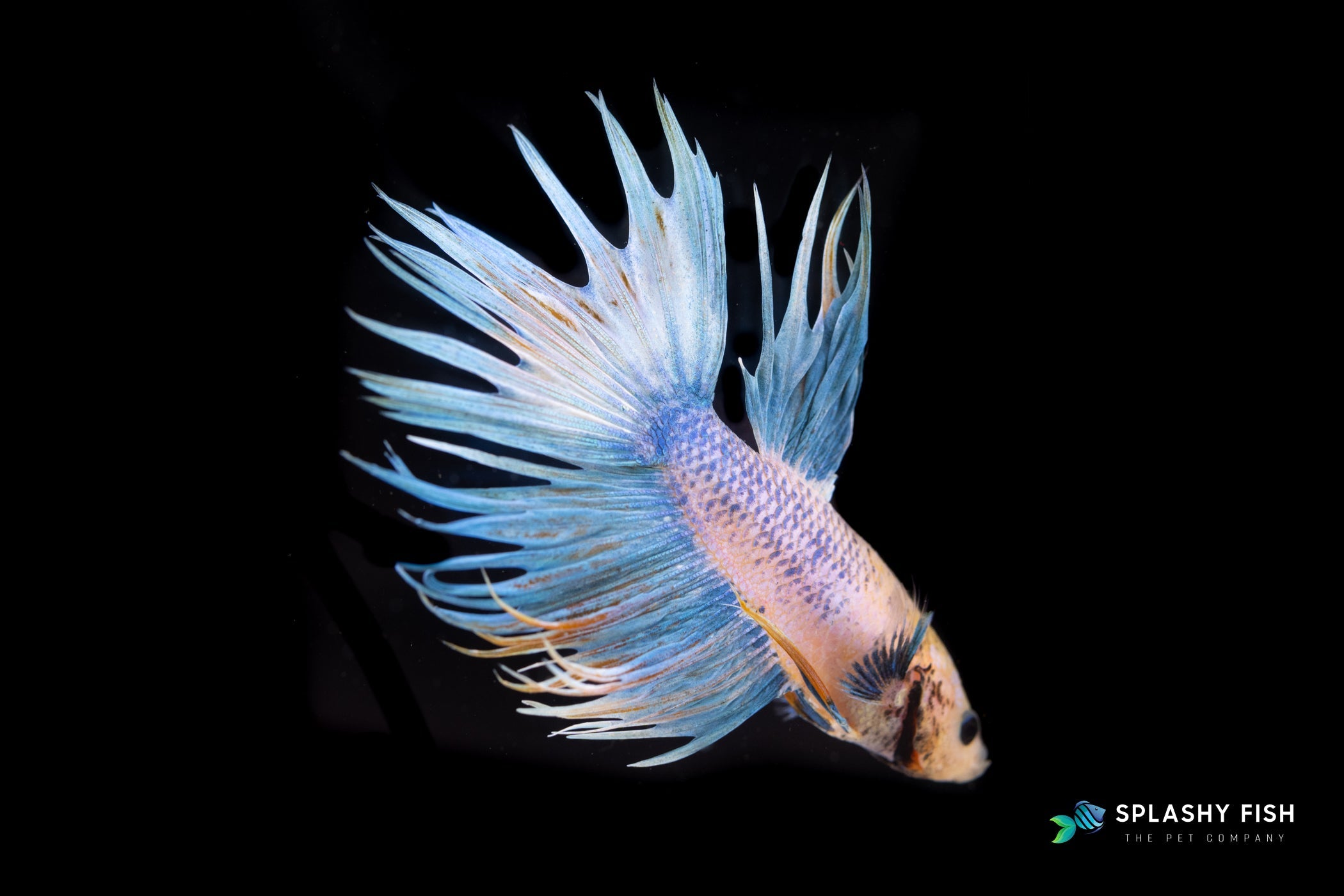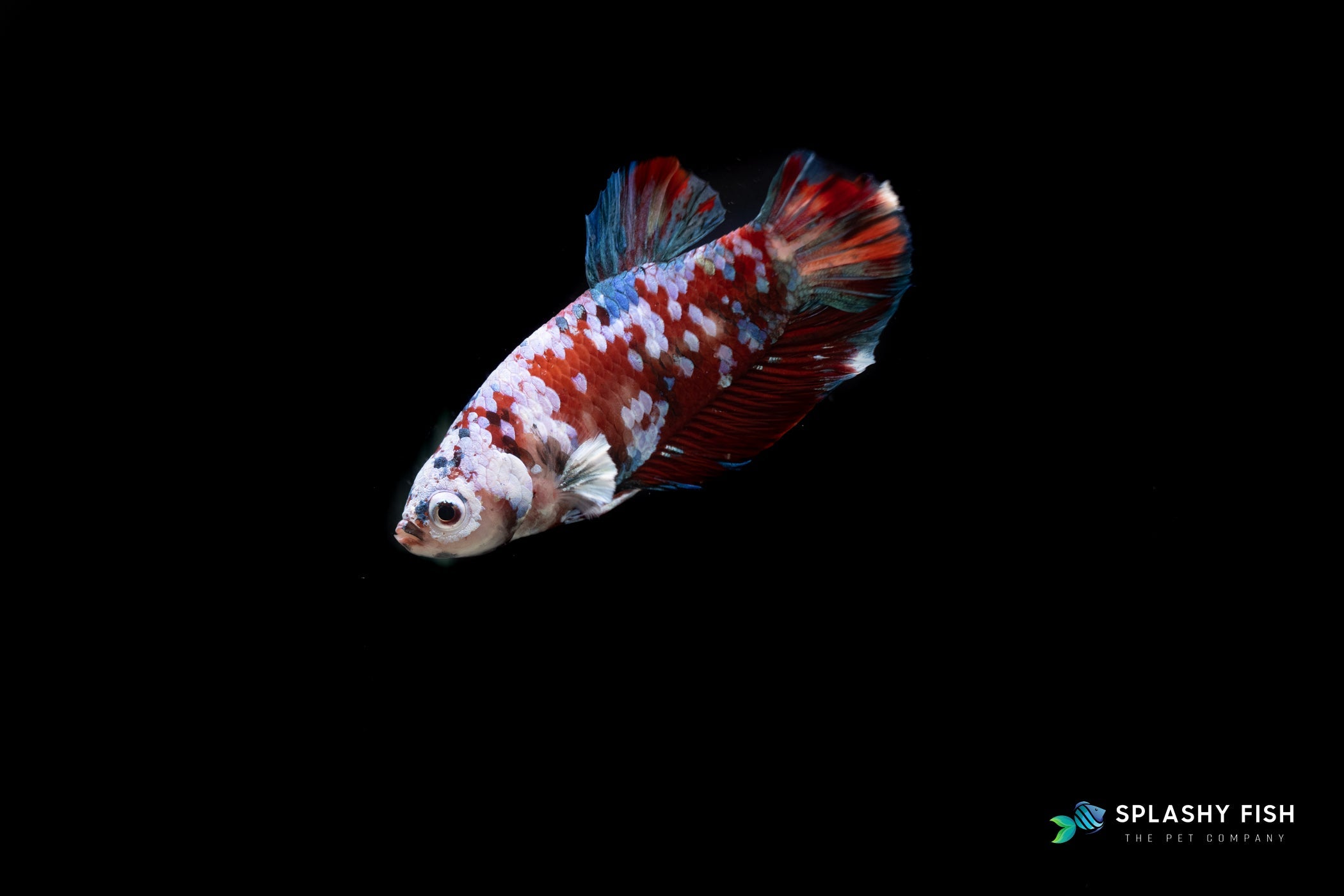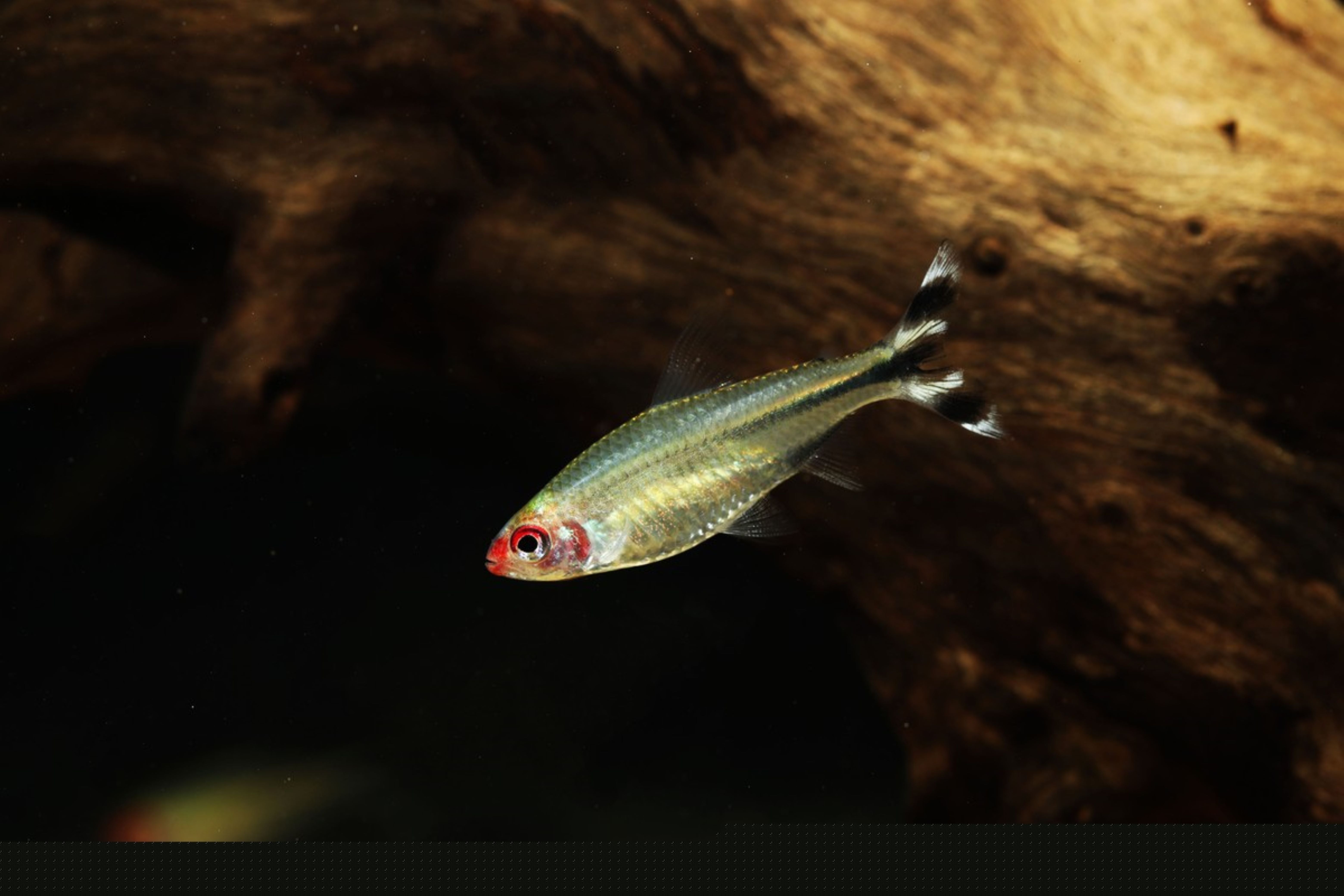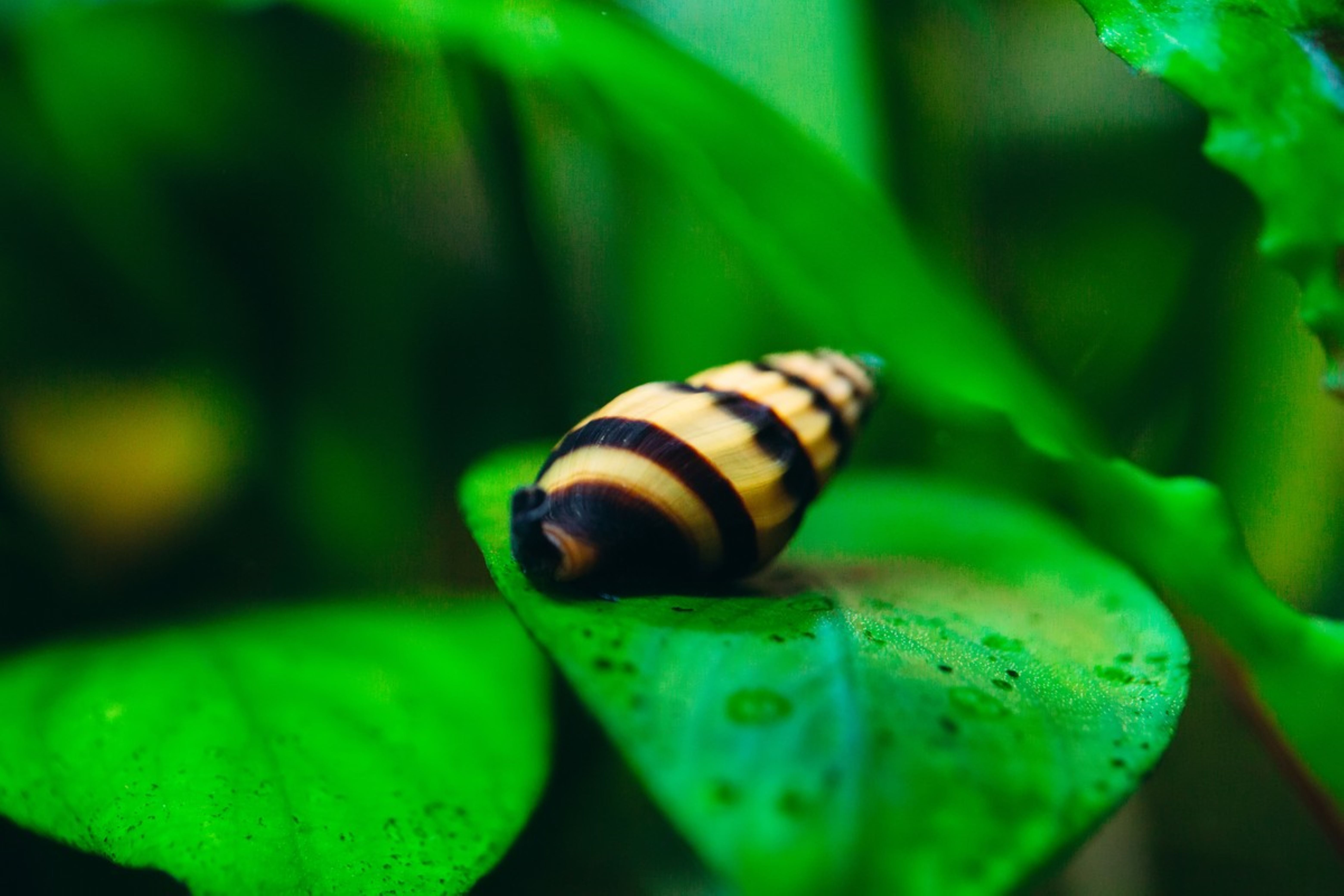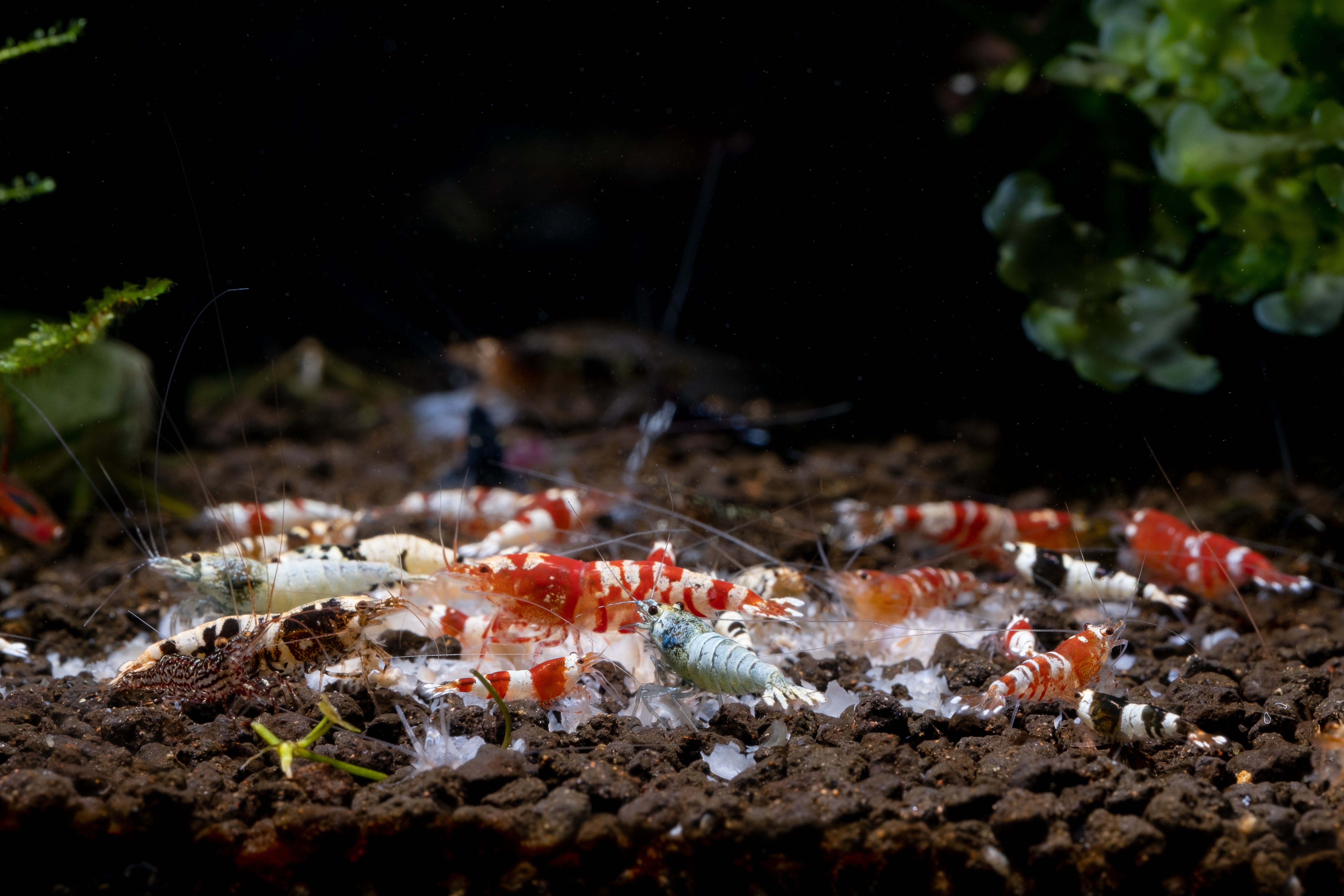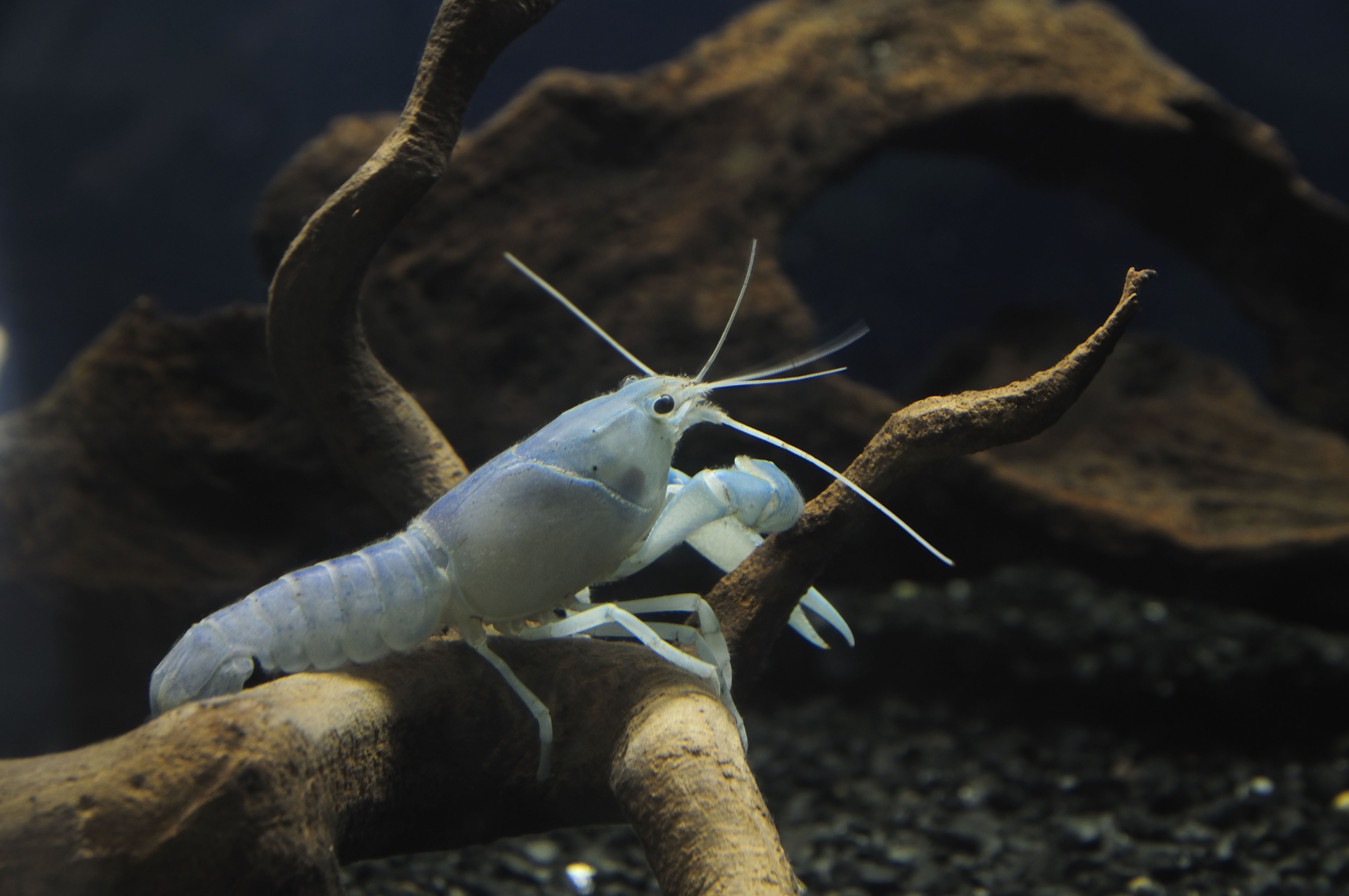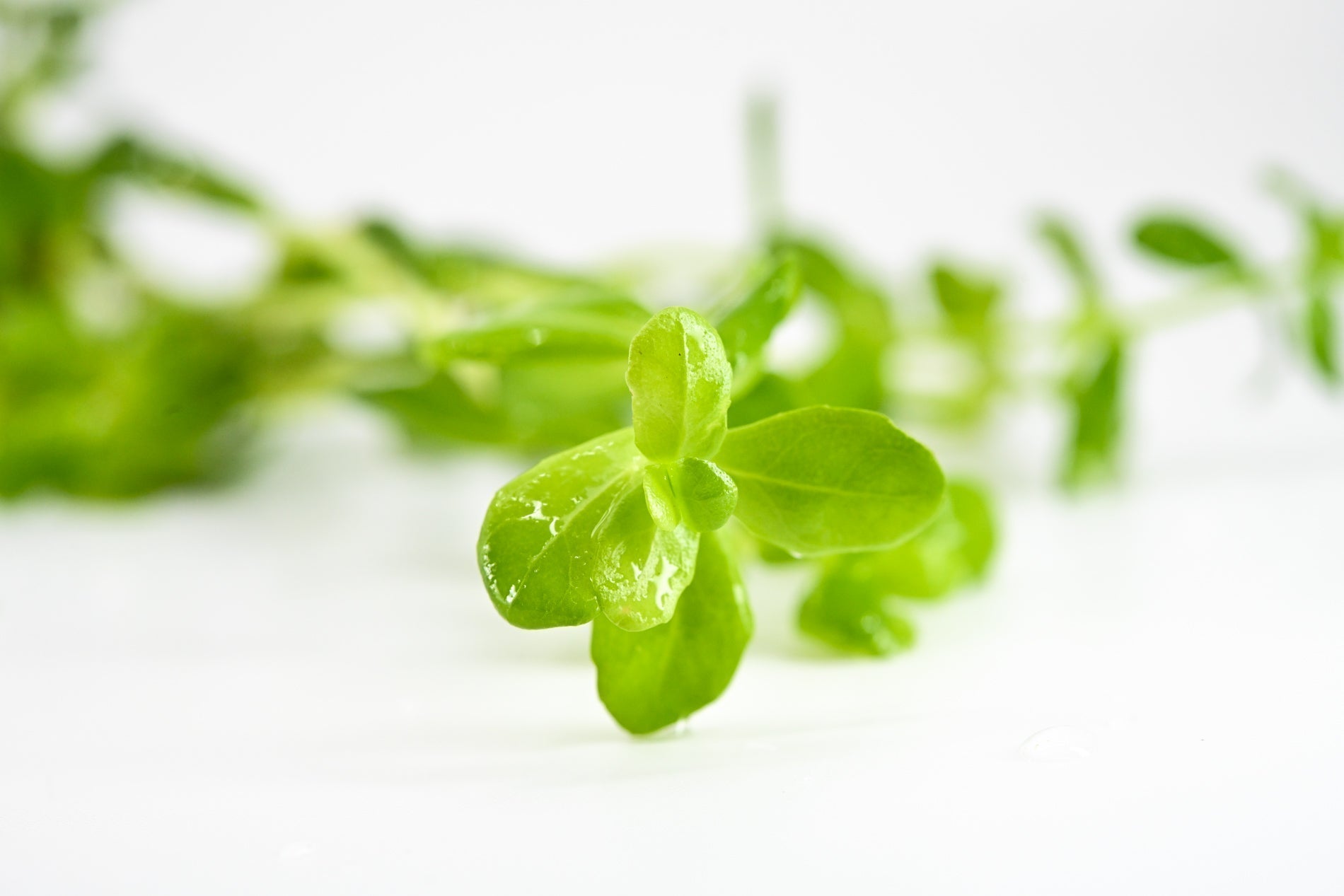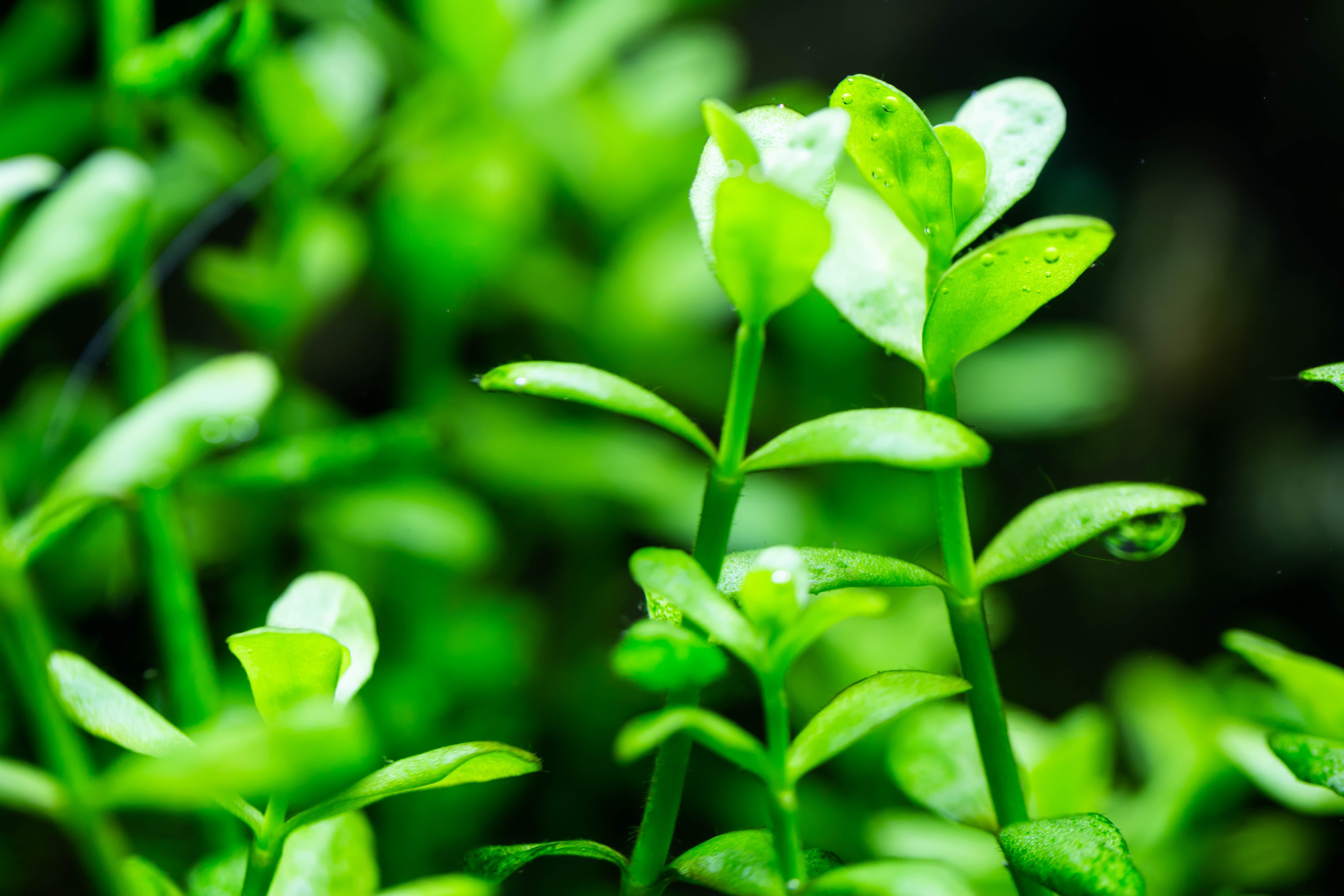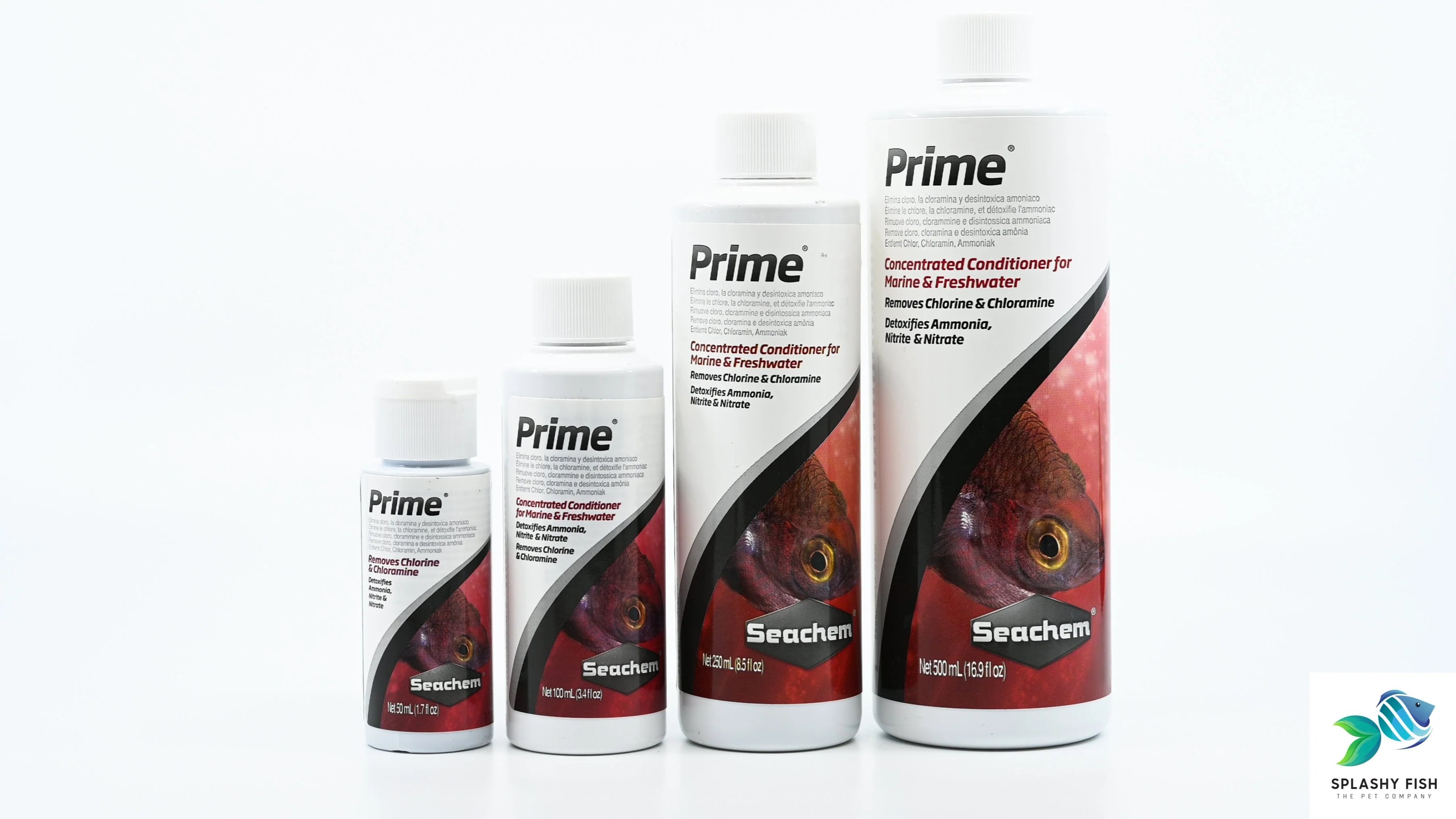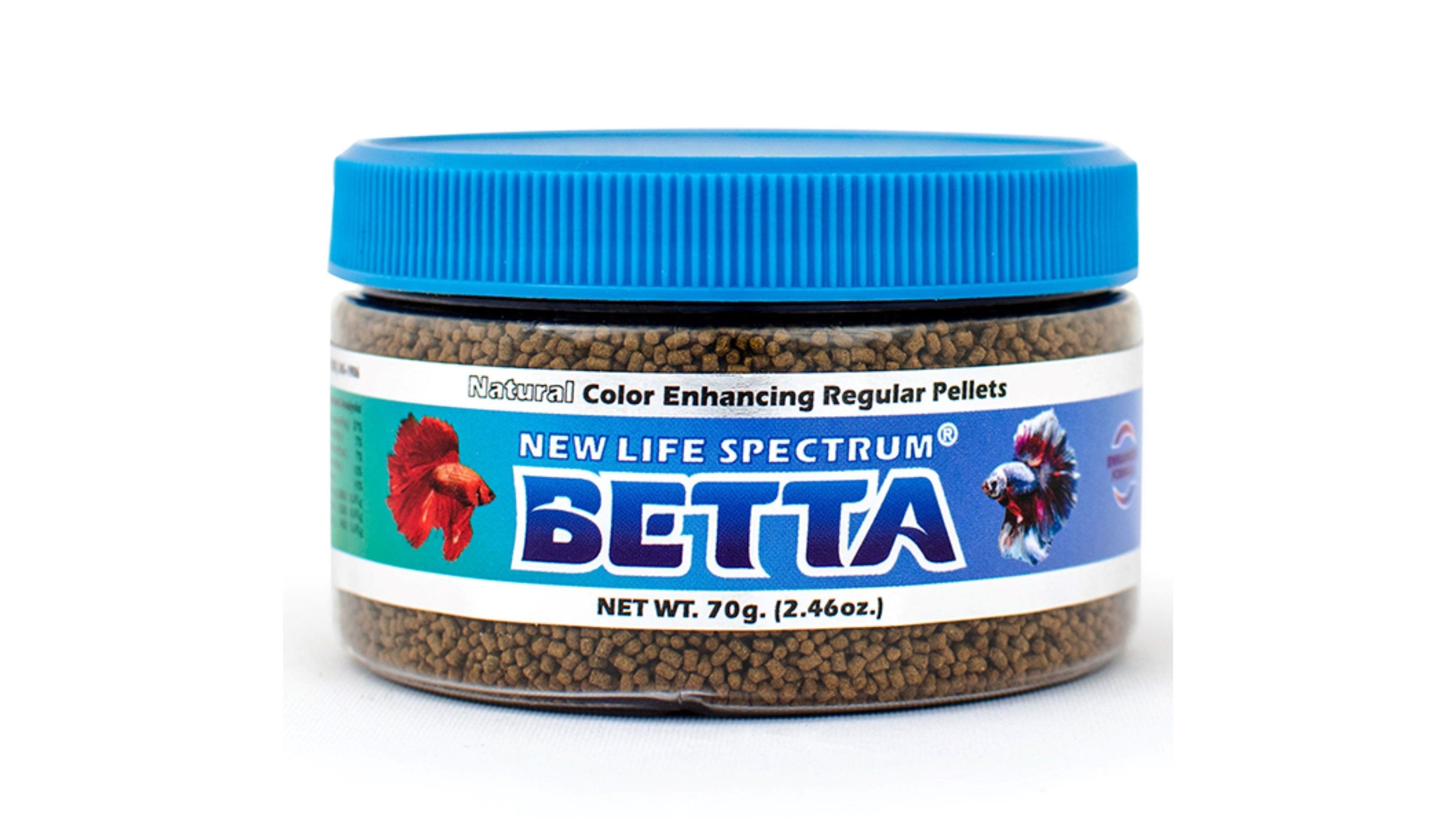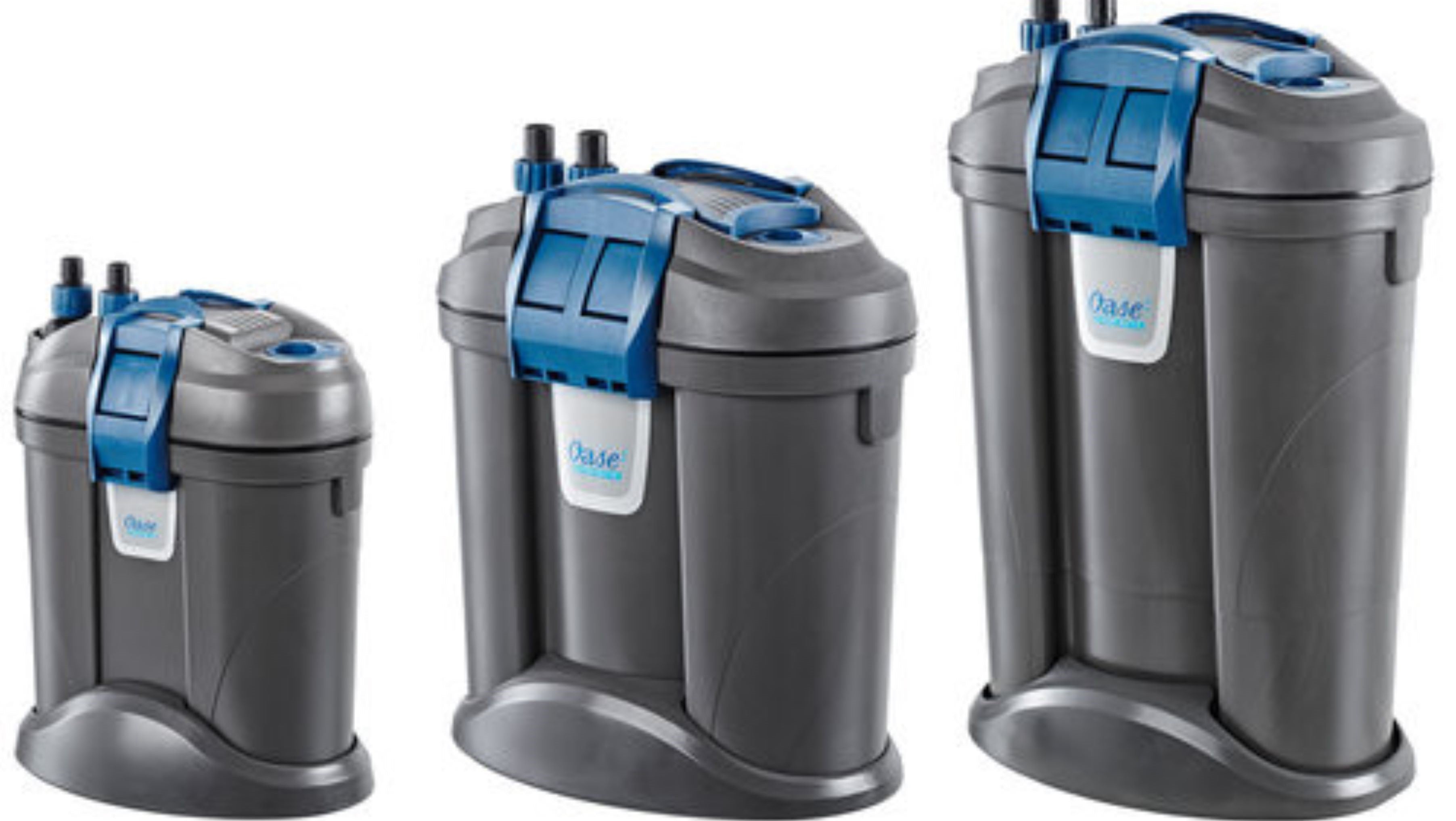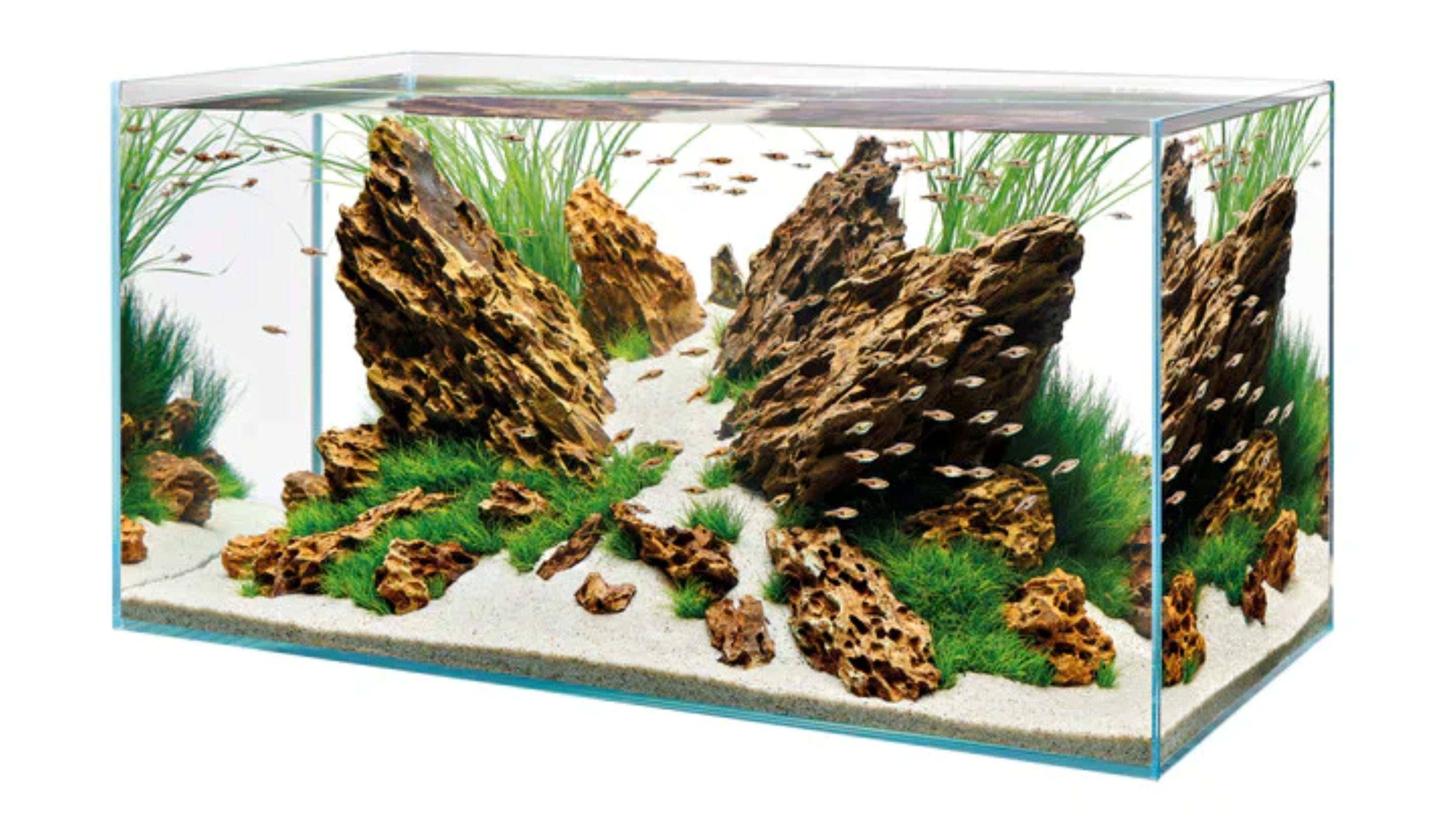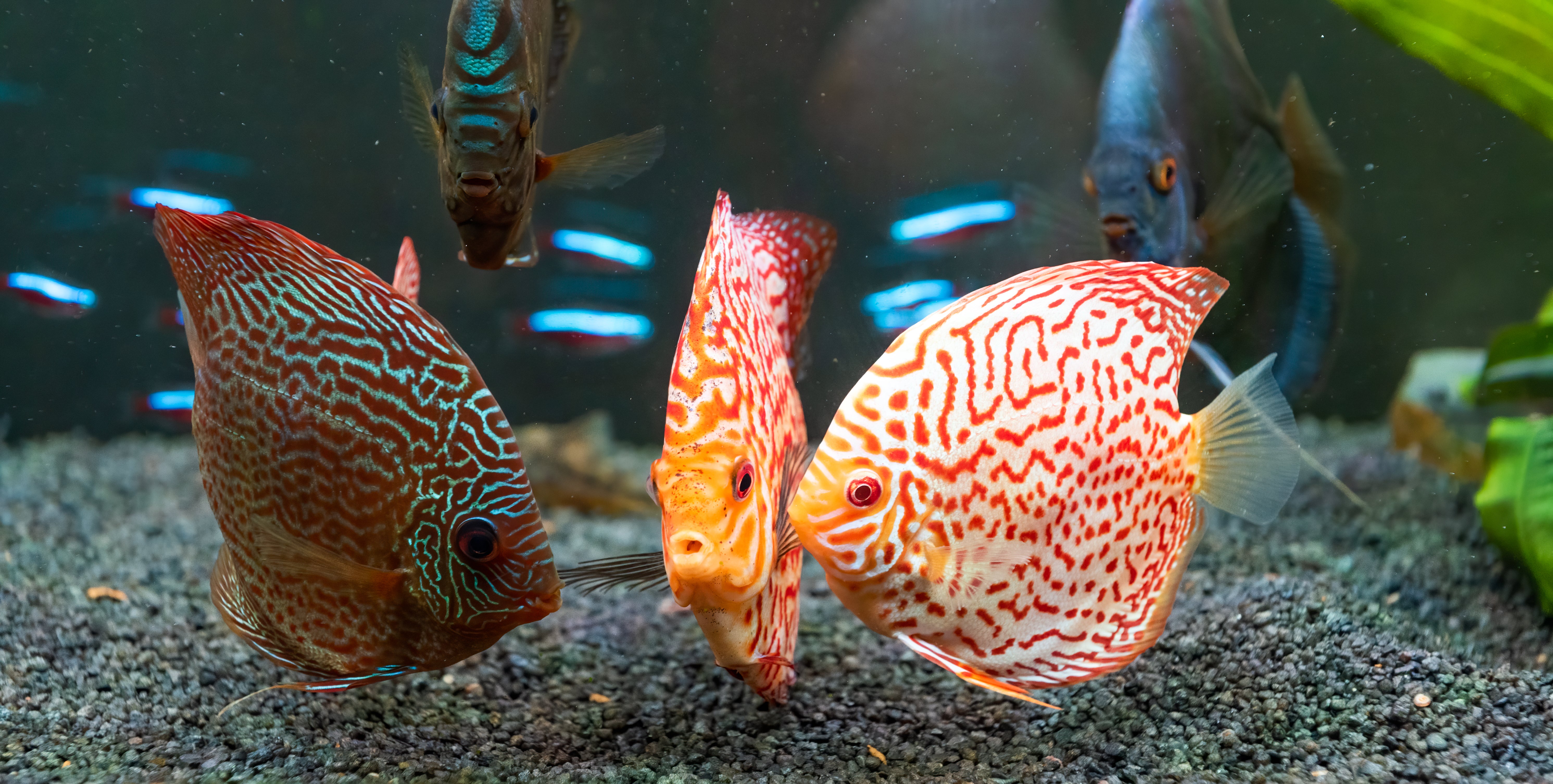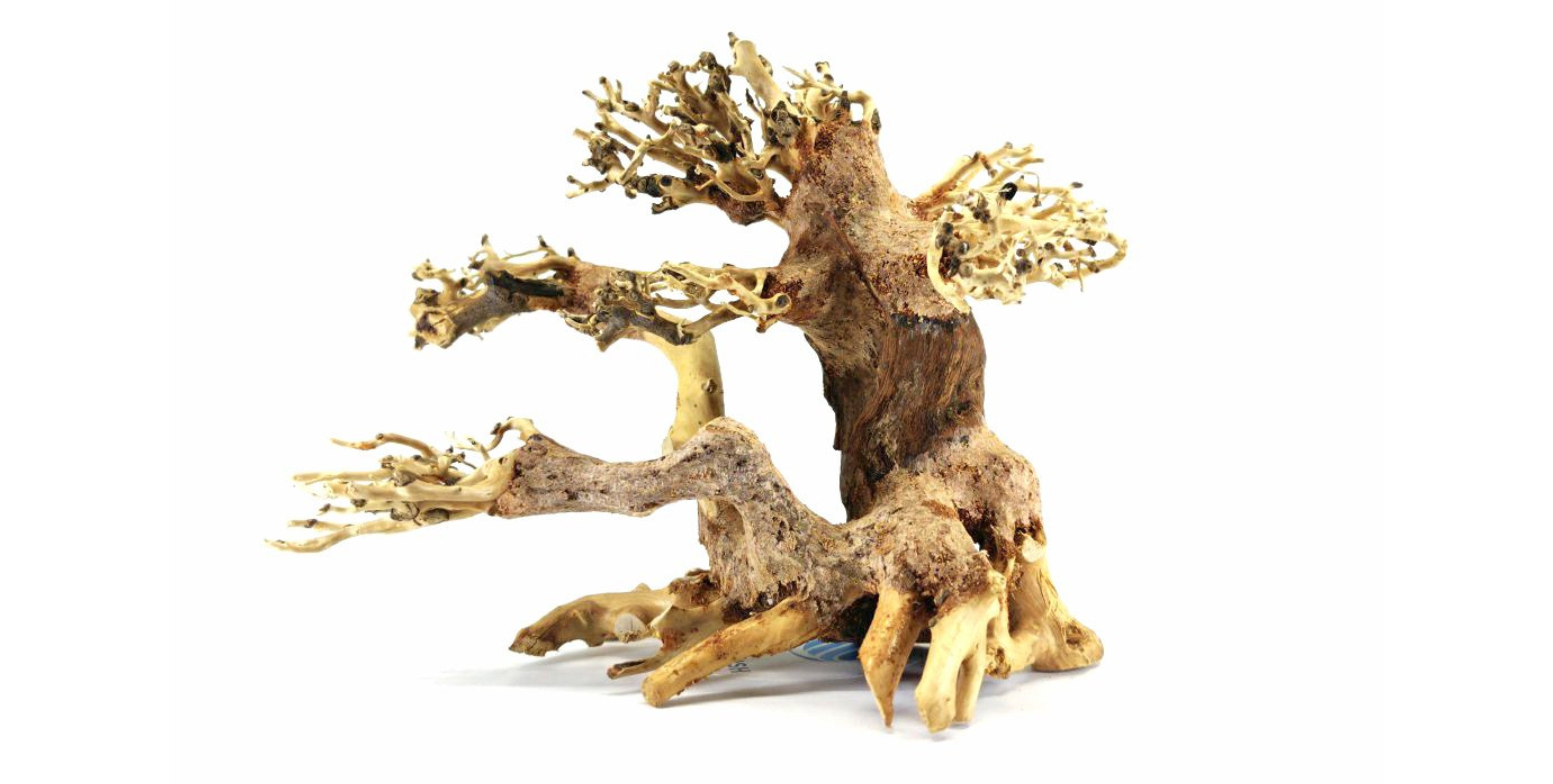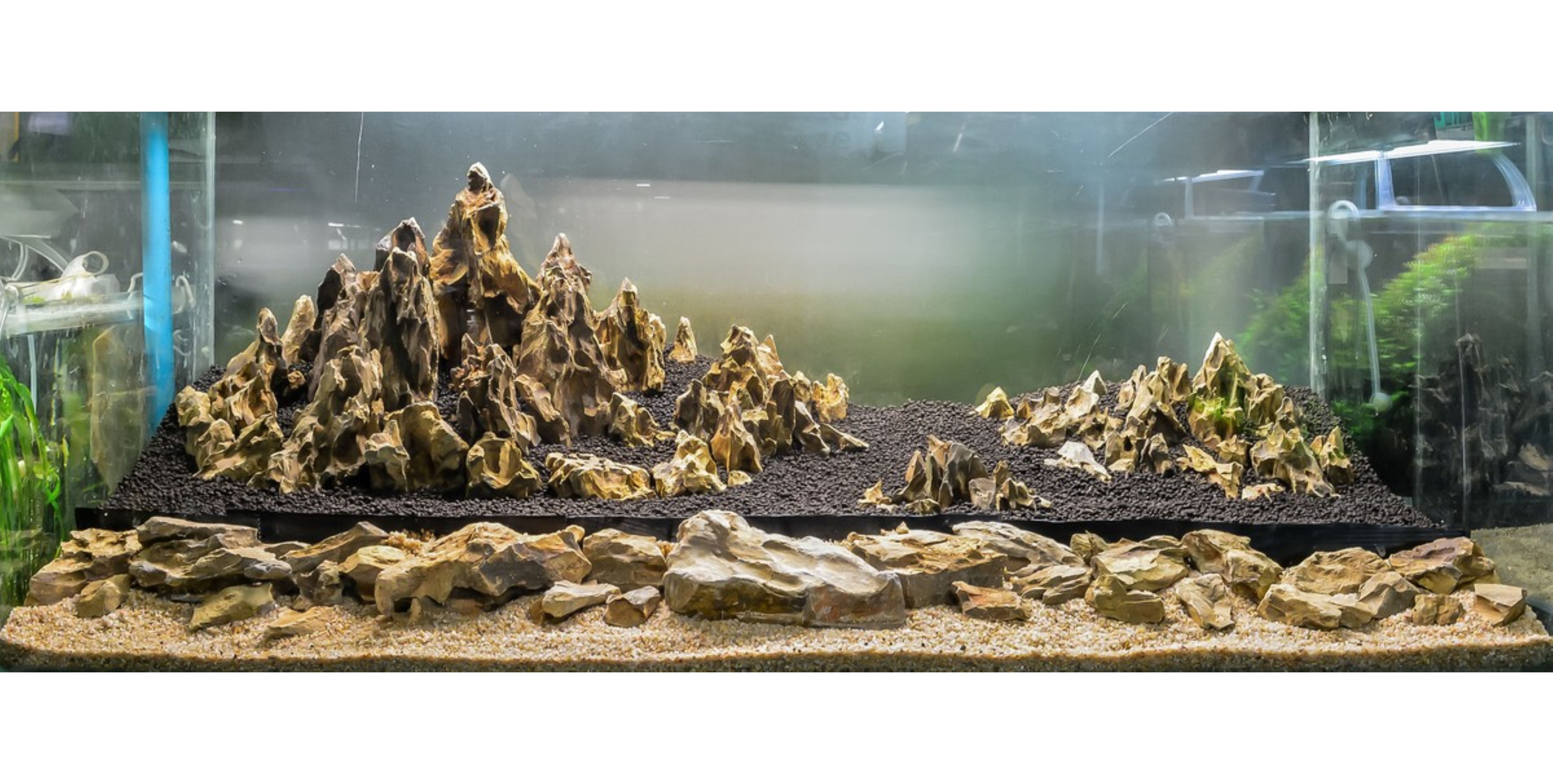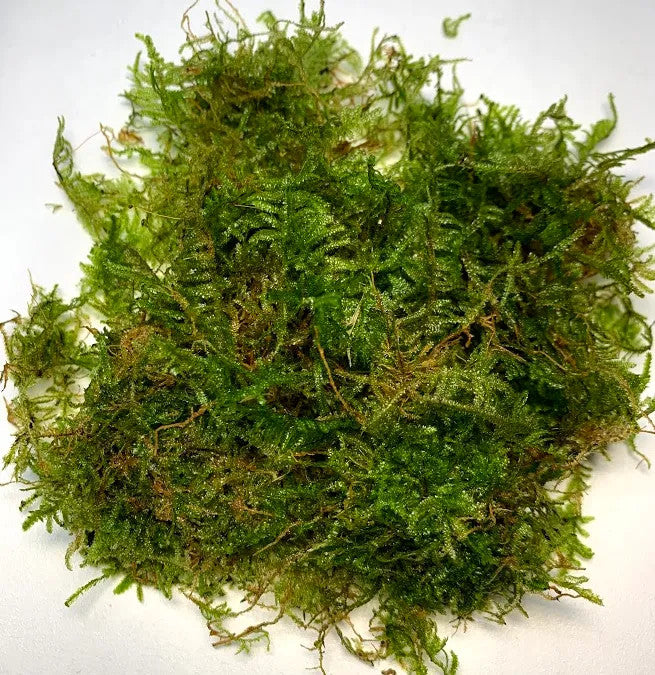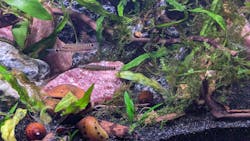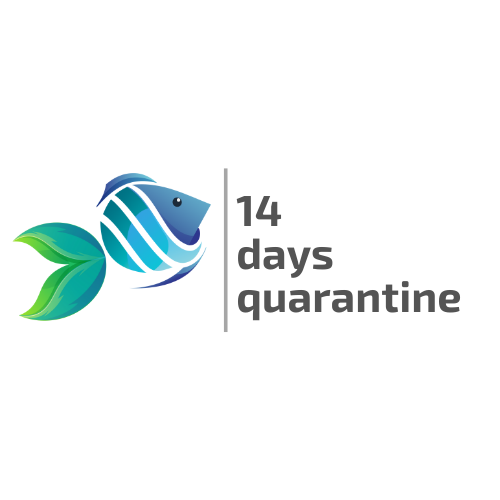
Java Moss
- In stock, ready to ship
- Inventory on the way
- Live Arrival Guarantee
- Get free shipping on non-live fish orders over $75 and live fish orders over $300.
- All our live fish, shrimp, snails are care with love and passion, when through minimum of 14 days quarantined and shipped from Splashy Fish facility in Springfield, Virginia, USA

This is only apply to live fish order.
What is Our Live Arrival Guarantee?
Benefit from our extensive experience in shipping live fish. In 2021, our records indicated a mere 0.5% dead-on-arrival (DOA) rate for all live fish orders, compared to the industry standard of 1.5%. These numbers translate to only 5 out of 1000 orders experiencing DOA fish.
At Splashy Fish, customer satisfaction is our priority. That's why we provide a 100% Live Arrival Guarantee on all animals shipped via USPS, UPS, or FedEx. Please note - Splashy Fish reserves the right to void Live Arrival Guarantee protection under the following circumstances:
- The customer has chosen USPS First Class Mail as a shipping method.
- The shipping address is a PO Box address
- The order was refused delivery by the customer.
- If the order is returned to the sender for any reason. For instance, an incorrect shipping address, an undeliverable address, etc.
- The order was held for pick up at USPS, UPS, and FedEx offices for longer than 24 hours after the last update on the tracking number.
- The Live Arrival Guarantee claim does not include all the requirements mentioned below
- The Live Arrival Guarantee claim is made after the claim period mentioned below.
- The animals are not in their original packaging
Live Arrival Guarantee Claim Period:
For Live Fish and other invertebrates, one and a half hours (1.5 hours) after the posted delivery time.
For Snails: 48 hours after the posted delivery time.
Steps to claim Splashy Fish's Live Arrival Guarantee:
- Take a picture of the shipping box and the shipping label.
- For live fish and other invertebrates: Please provide two pictures of each bag (containing the dead fish) upon arrival. Ensure the images display the bag in its original, unopened condition with the original rubber band intact
- For Snails: Position the snail in one corner of the tank. If the snail does not move within 48 hours, please take several pictures of the snail's opening
- Send an email to DOA@splashyfishstore.com with the subject line: DOA and Your Order Number, or message us on social media.
- In the body of the email, include your tracking number.
- The claim must be sent within the claim period mentioned above.
After submitting the required information, please allow us 1-3 business days to determine the cause of the issue. If the claim is valid and approved by our team, you will
- Receive a store credit for future purchases, excluding the shipping cost, of the dead-on-arrival fish
If the Live Arrival Guarantee claim does not meet all listed requirements, Splashy Fish reserves the right to reject it.
Shipping live animals and plants is a complex process, and temperature plays a crucial role in ensuring the safe and secure delivery of your order.
If the highest daytime temperature in your location and the lowest nighttime temperature here in Springfield, Virginia—where our facility is situated—fall below 40°F or exceed 90°F, we will proactively delay your order. This measure is taken to prioritize the well-being of the animals and plants.
For the safety of our living cargo and to protect your investment, we retain the right to suspend shipping as necessary due to extreme weather conditions. Our Splashy Fish team will assess the situation and determine if it is unsuitable to ship, considering the safety of the animals.
To stay informed or address any questions or concerns, feel free to reach out to our dedicated Splashy Fish Support team via email at support@splashyfishstore.com.
Once our team prints and packs your order, we'll notify you via email. This notification will include your tracking number and the expected arrival day. If you opt for UPS 2 Day shipping, your package should arrive within 2 days after shipment. Similarly, if you choose UPS 1 Day, your order will reach you the day after it is shipped. In the case of orders containing only plants or dry goods, they may be shipped via USPS, provided that this is the selected shipping option during checkout.
We ship all of the customer orders from our warehouse located in Springfield, VA. We pack and ship our orders depending on the orders with the exception of someday we cannot ship out live fish.
All Orders: will be shipped out from Monday to Thursday each week for overnight shipping by UPS.
Sunday: (Splashy Day) Today is the day we let our hard-working team members and our fish to destress and ready for the following week's shipment.
For more information regarding about shipping please visit us our Shipping Policy and Schedule
Purchase size: 1 Golf ball size
The biggest benefit of Java Moss (scientific name: Taxiphyllum barieri) is its ability to soften harsh features in aquariums. And if you are a big fan of the aquascape hobby, you should not have ignored them.
Java Moss is an easy-to-care-for plant. The bright green species can grow on any surface and provide a pleasing look to wherever it goes. Native to Asia, Java Moss prefers good water current with soft acidic levels and a temperature around 21- 24 °C. Low to high lighting conditions are acceptable to them, and this is also an interesting feature about Java Moss. This aquatic plant will respond differently when exposed to different lighting conditions. Many aquarists reported that Java Moss aquatic plant grows taller and thinner under low lighting systems, whereas with high lights, the plant will develop denser and more compact. The lighting factor also decides the need for supplements. If you leave Java Moss under moderate to high lighting, you may supplement them with CO2 and liquid fertilizers frequently. However, in many other cases, the addition may not be required regularly.
Known for its small size, the plant is surely placed in the foreground of aquariums. If you don’t like that setting, you can freely attach them to hardscapes such as driftwood, rock caves to create your desired landscape. Or you could use Java Moss to create a green wall in the back of your aquarium tank, like most other aquarists do. Simply attach them to mesh materials, then put them in the designed location and let them self-establish. You will soon be rewarded.
Order Java moss plants and begin to enhance your aquarium now!
What You Can Expect From This Plant:
- Natural and damp-forest-like view
- Provide hiding places for fish, baby fish, or fish eggs
- Undemanding species
RECOMMENDED TANK PARAMETERS:
- Temperature: 69° - 75° F (21° - 24°C)
- pH: 5.5 – 8.0
- GH: 6 – 20 dGH
- Minimum tank size: 10 gallons
CARE GUIDELINES:
- Supplements: CO2 additives and fertilizer may not be necessary, subject to lighting conditions.
- Lighting: Low to high, although it prefers moderate. Please note that low lights will affect the growth rate, while high lights may encourage the algae growth.
- Origin: Asia
- Potential height: Up to 4 inches (10 cm)
- Aquarium placement: Foreground, background
- Growth rate: Slow to medium
Java Moss Frequently Asked Questions (FAQs)
Is Java Moss Good for Your Aquarium?
Yes, Java Moss is an excellent choice for freshwater tanks. It provides shelter for small freshwater fish like Tetras, Rasboras, and Bettas, while also serving as a breeding ground for fry and freshwater shrimp. This hardy plant enhances water quality by absorbing excess nutrients and adds a lush, natural look to your aquascape, making it perfect for tanks with live aquatic plants.
Does Java Moss Help with Ammonia?
Yes, Java Moss helps reduce ammonia in your aquarium by absorbing it as part of its nutrient intake, improving water quality. Along with absorbing fish waste and nitrates, it promotes an ecological balance, limits algae growth, and supports clean, healthy water conditions. This makes Java Moss a great addition to tanks with live plants.
Is Java Moss Hard to Keep?
No, Java Moss is one of the easiest aquarium plants to care for. It thrives in low-light conditions and requires minimal nutrients, making it ideal for beginners. While it’s low-maintenance, occasional trimming and proper placement ensure healthy growth and a clean appearance in your tank.
Exploring the Green Oasis: The Ultimate Guide to Java Moss for Aquarium Enthusiasts
Welcome to the ultimate guide for aquarium enthusiasts on Java Moss! In this article, we'll dive deep into the fascinating world of this incredible live plant and explore all the reasons why it deserves a spot in your plant paradise. Java Moss, scientifically known as Taxiphyllum barbieri, is a captivating aquatic plant that is highly popular among fish keepers. Its lush green appearance and versatile nature make it a perfect addition to any aquarium setup. Not only does Java Moss add an aesthetic touch to your tank, but it also plays a significant role in maintaining a balanced ecosystem. Its dense growth offers shelter and hiding places for small freshwater fish and fry, while also serving as a natural water purifier by absorbing excess nutrients. Whether you're a aquarium beginner in the world of aquariums or a seasoned hobbyist, this guide will provide you with all the information you need to grow and care for Java Moss successfully. We'll share tips on propagation, maintenance, and creative ways to incorporate this versatile plant into your aquatic landscape. So, let's embark on this green oasis journey and discover the wonders of Java Moss together!
Benefits of adding Java Moss to your aquarium
Java Moss is more than just an ornamental plant—it’s a functional powerhouse for your aquarium tank:
1. Natural Shelter: A Safe Haven for Aquatic Life
Java Moss’s dense, tangled growth provides essential cover for various tank inhabitants:
-
Protection for Small Fish and Fry: Its intricate structure serves as a natural hiding place for fry (baby fish), protecting them from predators and giving them a chance to grow safely.
-
Freshwater Shrimp Habitat: For freshwater shrimp species like Amano, Cherry, and Ghost Shrimp, Java Moss offers a perfect place to graze, rest, and hide, reducing their stress levels.
-
Stress-Free Environment: Timid fish, such as small tetras or rasboras, use the live aquarium plant as a shelter, mimicking the protective cover found in their natural habitats.
2. Water Purification: Promoting a Healthier Ecosystem
Java Moss plays an active role in improving water quality within your freshwater aquarium:
-
Nutrient Absorption: It absorbs excess nutrients like nitrates, phosphates, and ammonia, helping to balance the water chemistry and reducing the risk of algae outbreaks.
-
Oxygenation: During photosynthesis, Java Moss releases oxygen into the water, improving the overall oxygen levels and supporting the health of freshwater fish and other aquatic life.
-
Filtration Support: The plant’s surface traps fine debris and floating particles, assisting in natural filtration and keeping the water clearer.
3. Breeding Ground: Encouraging Reproductive Success
Java Moss is an excellent choice for aquarists focused on breeding:
-
Egg-Laying Surface: Its soft, cushion-like texture provides an ideal surface for egg-laying species, such as Celestial Pearl danios, barbs, and tetras.
-
Microorganism Habitat: Java Moss harbors microorganisms and infusoria, which serve as a natural food source for newly hatched fry, supporting their growth and survival.
-
Freshwater Shrimp Breeding: Shrimp benefit from the shelter and food sources Java Moss provides, creating a conducive environment for breeding.
4. Aesthetic Appeal: Adding Natural Beauty to Your Aquarium
Java Moss is highly valued for its lush, vibrant green appearance, which enhances the visual appeal of any tank:
-
Versatile Design Options: Whether used as a carpet, wall, or tree-like structure, Java Moss can be creatively incorporated into aquascapes of all styles.
-
Natural Ambiance: Its soft and flowing texture mimics underwater vegetation, giving your tank a serene, natural look that complements both simple and complex setups.
-
Blends with Hardscapes: Java Moss attaches easily to driftwood, aquarium rocks, and natural decorations, making it a flexible choice for freshwater aquascaping.
Java Moss Care and Maintenance
Caring for Java Moss is straightforward, making it a popular choice for aquarium beginners and experienced aquarists alike. With its resilience and adaptability, it thrives in a variety of tank conditions. Here’s a detailed guide to ensure your Java Moss stays healthy and lush:
1. Water Parameters: Ideal Conditions for Growth
Java Moss is highly adaptable and can tolerate a range of water conditions, but optimal parameters promote healthy growth:
-
Temperature: Thrives in a wide temperature range of 68°F–86°F (20°C–30°C), making it suitable for both tropical and cold-water aquariums.
-
pH Levels: Performs best in a pH range of 6.0–8.0, accommodating slightly acidic to slightly alkaline water.
-
Hardness: Prefers soft to moderately hard water, but can adapt to harder water over time.
2. Aquarium Lighting: Finding the Right Balance
Java Moss is versatile when it comes to lighting:
-
Low Light: Grows slowly under low light but remains healthy, making it ideal for low-tech tanks.
-
Moderate to Bright Light: Faster growth is observed with moderate or brighter lighting, though this may increase the risk of algae buildup on its surface.
-
Avoid Excessive Light: To prevent algae growth, limit light exposure to 6–8 hours per day, or use a timer for consistent lighting cycles.
3. Attachment: Secure Placement in Your Tank
Java Moss is a flexible plant that can grow in various configurations:
-
Anchor to Hardscapes: Use fishing line, cotton thread, or aquarium-safe glue to attach it to driftwood, rocks, or aquarium decorations. Over time, the moss will naturally adhere to the surface.
-
Floating Option: Java Moss can also thrive while floating, creating a natural canopy effect. This is particularly useful for aquarium tanks with fry or shrimp.
-
Versatile Placement: Experiment with different placements, such as carpeting the aquarium substrate, creating moss walls, or shaping it into trees.
4. Pruning: Keeping Java Moss Neat and Healthy
Regular pruning is essential to maintain the shape and health of Java Moss:
-
Trim Overgrowth: Use sharp scissors to cut back overgrown areas and encourage dense, even growth.
-
Remove Debris: Java Moss can trap debris and waste within its dense structure. Regular cleaning with gentle water flow or manual removal helps maintain its appearance and water quality.
-
Replant Trimmings: Propagate by reusing trimmed sections, which can be anchored to new surfaces or left floating to grow.
How to Propagate Java Moss
Propagating Java Moss is a simple and rewarding process, making it an excellent plant for beginners and experienced aquarists alike. Here’s a step-by-step guide to ensure successful propagation:
1. Division: Splitting the Moss
Java Moss grows in dense, intertwined clusters, allowing you to propagate it by dividing the live plant:
-
Cut or Tear: Gently cut or tear off a portion of the moss using clean scissors or your hands. The size of the portion can vary depending on your needs.
-
Healthy Pieces: Choose sections that are green and vibrant for better growth. Avoid brown or decaying parts.
2. Floating Propagation: A Natural Approach
Java Moss can propagate naturally while floating:
-
Let It Drift: Place loose pieces of moss in the water and allow them to float freely. Over time, the moss will grow and anchor itself to surfaces like aquarium rocks or decorations.
-
Ideal for Freshwater Shrimp and Fry: Floating moss creates a natural shelter and feeding ground, making it particularly beneficial for shrimp and fry tanks.
Propagation Tips for Success
-
Water Flow: Moderate water flow can help distribute nutrients to the moss, encouraging healthy growth.
-
Lighting: Provide low to moderate light to promote faster propagation without encouraging algae growth.
-
Regular Pruning: Trim the moss periodically to maintain its shape and prevent overgrowth, which can overshadow other live aquarium plants or decorations.
Using Java Moss for Aquarium Landscape
Java Moss is a favorite among aquascapers due to its versatility and natural aesthetic. Whether you’re designing a lush underwater garden or a minimalist setup, Java Moss adapts beautifully to various aquascaping styles. Here are some creative ways to incorporate it into your planted tank:
1. Carpeting: Lush Green Ground Cover
Create a vibrant and natural carpet effect with Java Moss:
-
How to Achieve: Anchor small portions of moss to flat surfaces such as mesh, aquarium stones, or directly onto the aquarium substrate. Over time, the moss will spread to form a dense green carpet.
-
Ideal Placement: Use as a foreground element to add depth and texture to your aquascape.
-
Compatibility: Works well in tanks with low-light conditions and moderate water flow to encourage even growth.
2. Walls and Trees: Vertical and Elevated Designs
Transform Java Moss into stunning vertical or elevated aquascaping features:
-
Moss Walls: Attach moss to a fine mesh panel and place it vertically in the aquarium tank to create a natural "living wall." This adds depth and acts as a backdrop for your freshwater aquarium.
-
Bonsai Trees: Attach Java Moss to driftwood shaped like tree branches to mimic the appearance of miniature bonsai trees. This is a popular choice for artistic aquascapes.
-
Water Flow Considerations: Ensure gentle water flow to help the moss adhere and grow uniformly.
3. Freshwater Shrimp and Betta Tanks: Ideal Habitat Enhancements
Java Moss is particularly beneficial for fish tanks housing small or delicate species:
-
Shrimp Tanks: Provides shelter, grazing surfaces, and an abundant source of biofilm for shrimp species such as Amano or Cherry Shrimp.
-
Betta Tanks: Offers hiding spots and a soft environment for bettas, mimicking their natural habitat.
-
Breeding Tanks: Perfect for fry, as it provides protection and a natural food source in the form of microorganisms.
4. Nano Tanks: Compact and Manageable Growth
Java Moss is an excellent choice for small aquarium tanks:
-
Why It's Perfect: Its slow growth and compact nature make it easy to maintain in nano aquariums.
-
Creative Use: Use it as a centerpiece, a small carpet, or even as a free-floating feature in smaller tank setups.
-
Low-Tech Tanks: Ideal for nano tanks without high lighting or CO₂ supplementation.
Tips for Using Java Moss in Aquascaping
-
Trimming: Regularly prune to maintain shape and prevent overgrowth, which can overshadow other plants or hardscapes.
-
Attachment: Use fishing line, thread, or glue to anchor the moss securely to surfaces.
-
Lighting: Moderate lighting encourages healthy growth without excessive algae buildup.
-
Water Flow: Gentle water flow promotes uniform growth and prevents detachment.
Common Issues and Troubleshooting Tips for Java Moss
Although Java Moss is hardy and easy to maintain, it may encounter some issues in certain aquarium setups. Here’s a detailed guide to addressing common problems and ensuring your Java Moss thrives:
1. Algae Growth
Issue: Algae can grow on Java Moss, especially under strong or prolonged lighting, diminishing its appearance and health.
Troubleshooting Tips:
-
Control Light Exposure: Limit lighting to 6–8 hours per day and avoid high-intensity lighting directly over the moss.
-
Balanced Nutrients: Avoid over-fertilization. Ensure nitrate and phosphate levels are appropriate for live plant growth without promoting algae.
-
Water Flow: Maintain moderate water circulation to discourage algae buildup on moss surfaces.
-
Algae-Eating Tank Mates: Introduce species like Amano shrimp, Nerite snails, or Otocinclus catfish to help manage algae naturally.
-
Manual Cleaning: Gently clean the moss with a soft toothbrush or rinse it in aquarium tank water during water changes to remove algae.
2. Yellowing or Browning
Issue: Java Moss may turn yellow or brown due to poor water quality, nutrient deficiencies, or abrupt environmental changes.
Troubleshooting Tips:
-
Stable Water Parameters: Maintain consistent water conditions, including a temperature range of 68°F–86°F (20°C–30°C) and a pH of 6.0–8.0.
-
Nutrient Levels: Check for deficiencies in essential nutrients. Adding a liquid fertilizer designed for aquatic plants can help.
-
Avoid Sudden Changes: Gradually acclimate moss to new aquarium tanks or water parameters to minimize stress.
-
Trim Damaged Sections: Remove yellow or brown areas to encourage healthy new growth.
3. Detachment
Issue: Java Moss can become dislodged and float away in aquarium tanks with strong water currents or improper anchoring.
Troubleshooting Tips:
-
Secure Attachment: Use cotton thread, or aquarium-safe glue to anchor the moss to driftwood, rocks, or mesh securely.
-
Placement Considerations: Position moss in areas with moderate water flow to help it stay attached and grow uniformly.
-
Natural Anchoring: Allow floating pieces to settle naturally on surfaces if you prefer a less structured look.
General Maintenance Tips
-
Prune Regularly: Trim overgrown moss to prevent overshadowing other aquatic plants and maintain a neat appearance.
-
Clean Gently: Periodically remove debris trapped in the moss to maintain water quality and aesthetic appeal.
-
Monitor Tank Conditions: Regularly test water parameters and adjust as needed to support healthy moss growth.
Compatible Freshwater Fish and Tank Mates for Java Moss
Java Moss is a highly adaptable plant that pairs well with a wide variety of tank inhabitants, providing benefits to both the ecosystem and the aquatic life within your aquarium. Here’s how it enhances the environment for different species:
1. Freshwater Shrimp
Java Moss is an excellent choice for shrimp tanks due to its structure and utility:
-
Amano Shrimp: Ideal for grazing on the biofilm and algae that accumulate on the moss.
-
Cherry Shrimp: Provides shelter and a secure environment for molting and breeding.
-
Ghost Shrimp: The dense moss serves as a natural feeding ground and hiding place, reducing stress levels.
2. Fry and Small Freshwater Fish
Java Moss is a favorite for tanks housing fry and small fish:
-
Shelter for Fry: The dense growth offers protection for fry from predators and creates a secure space for them to grow.
-
Feeding Grounds: Harbors microorganisms and infusoria, which serve as a vital food source for newly hatched fry.
-
Small Fish Species: Perfect for species like guppies, tetras, and rasboras, offering them a natural hiding and resting place.
3. Algae Eaters
Java Moss complements tanks with algae-eating species:
-
Otocinclus Catfish: Helps maintain a clean tank by consuming algae that may grow on the moss.
-
Siamese Algae Eaters: Thrive in tanks with Java Moss, benefiting from its additional hiding spots.
-
Freshwater Snails: Nerite snails and other algae-eating snails can graze on the moss surface, keeping it clean without damaging the live plant.
Java Moss in Different Types of Aquariums
Java Moss is versatile enough to thrive in various aquarium setups, making it suitable for both beginners and experienced aquarists:
1. Community Tanks
Java Moss is an excellent addition to community tanks, where diverse species coexist:
-
Harmonious Coexistence: Supports fish, shrimp, and live plants by providing shelter, oxygenation, and natural aesthetics.
-
Multi-Level Habitat: Enhances tank dynamics by creating layers of greenery for different species to explore.
2. Breeding Tanks
For breeding setups, Java Moss is indispensable:
-
Egg-Laying Species: Offers a soft surface for species like angelfish, corydoras, and tetras to lay their eggs.
-
Fry Protection: Shields fry from predators, increasing their survival rates.
3. Low-Tech Aquariums
Java Moss thrives in low-tech setups, making it perfect for beginners:
-
Minimal Care: Requires only low to moderate light and no CO₂ supplementation.
-
Low Maintenance: Grows slowly and doesn’t need frequent pruning, ideal for hobbyists with limited time.
4. High-Tech Aquariums
For advanced aquascapers, Java Moss excels in high-tech tanks:
-
Faster Growth: Grows more rapidly with CO₂ supplementation and brighter lighting.
-
Design Versatility: Perfect for creating intricate aquascaping designs like moss walls, carpets, and bonsai-style trees.
Conclusion: Why Java Moss is a must-have for aquarium enthusiasts
Java Moss is a versatile, low-maintenance plant that benefits both your tank’s ecosystem and aesthetics. From natural shelter for aquatic life to its role in water purification, it’s a true asset for any aquarium.
Whether you're looking to create a lush aquascape, a breeding haven, or a stress-free environment for your aquatic pets, Java Moss is the perfect choice. Start your journey into the green oasis today and transform your tank into a thriving aquarium paradise!


